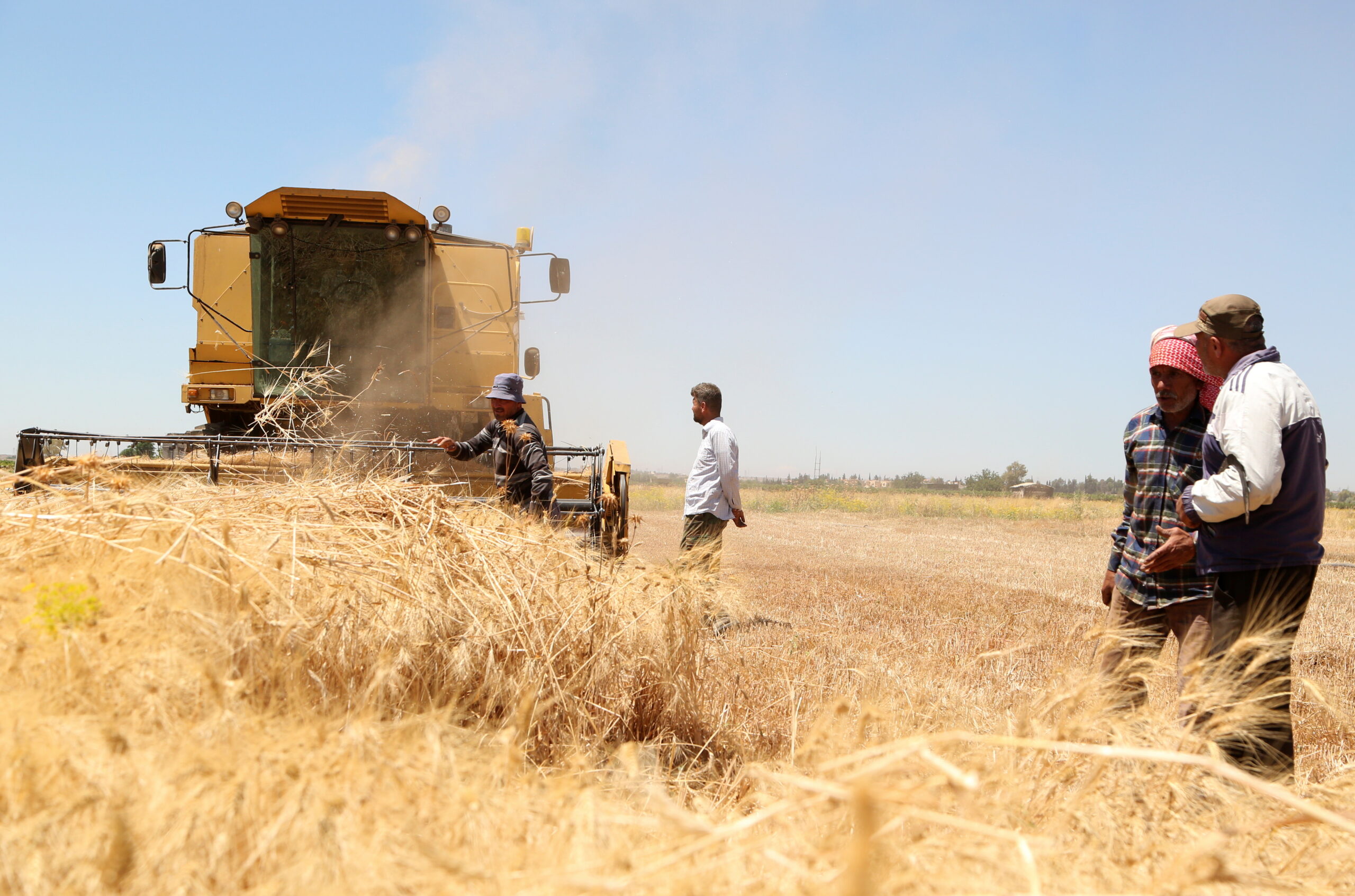
26% of GDP: (Pre-Conflict Once Syria’s top economic driver.
4.2M Tonnes Wheat Capacity: Self-sufficient and export-ready
1.4 Hectares Irrigated Infrastructure primed for revival
$140M Olive Oil Exports Strong global demand endures
Syria’s agricultural landscape is deeply rooted in centuries of cultivation and commerce. Before the conflict, its 6.5 million hectares of arable land, supported by an intricate mix of irrigated (25%) and rain-fed (57%) systems, placed Syria among the region’s leading food producers. Agriculture contributed 26% of national GDP, employed 17% of the workforce, and exported significant volumes of cotton, wheat, olives, citrus, and vegetables. These exports flowed through ports, into regional markets, and fueled rural economies that formed the backbone of national stability.
That foundation was shaken by war. The sector saw a 50–60% drop in productivity in key regions. Irrigation canals were destroyed. Seed stocks, equipment, and post-harvest infrastructure degraded. Yet agriculture endured—even in crisis. Across conflict-affected areas, local communities have restarted cultivation, restored small-scale irrigation, and revived food markets. These early efforts form the basis of a larger, coordinated resurgence.
Today, the agriculture sector is not only essential to national recovery—it represents one of Syria’s most investable frontiers. The need is vast, the market is underserved, and the pathways for modernization are clear.
Irrigation Rehabilitation & Water Efficiency
Restoring Syria’s water infrastructure offers immediate productivity gains. Investors can partner on canal reconstruction, solar-powered pumps, and water-smart irrigation systems across more than 760,000 hectares of formerly irrigated land.
Agro-Processing & Value Chain Infrastructure
Damaged mills, packing stations, and cold storage facilities need rebuilding or modernization. Investment here enables domestic food security and unlocks high-margin export potential—particularly in olives, grains, and dairy.
Inputs & Mechanization
Syria currently faces acute shortages in certified seed, fertilizers, and farm equipment. The market is open for trusted providers of inputs, leasing models, and training partnerships—especially in wheat and horticulture.
Climate Resilience & Crop Innovation
Climate volatility is a growing concern, with over 75% of Syria’s wheat crop exposed to seasonal drought. Introducing drought-tolerant seed varieties and regenerative agriculture techniques can boost yields and long-term resilience.
Export Compliance & Certification Systems
For Syria’s agri-sector to scale, food safety, phytosanitary protocols, and traceability systems must be rebuilt. These represent opportunities for U.S. companies offering digital ag solutions and regulatory support services.
6.5 million hectares of arable land
26% of GDP pre-war derived from agriculture
12 million people food insecure (2024 estimate)
50%+ of irrigation systems damaged or inoperable
20–30% post-harvest losses due to lack of cold storage
Through the U.S.-Syria Business Council, U.S. and Syrian stakeholders can navigate a complex—but high-potential—agriculture landscape. The Council facilitates commercial dialogue, connects partners across the supply chain, and provides the policy insight needed to de-risk investment in key sub-sectors. We help identify opportunities where strategic engagement can yield sustainable returns and meaningful impact—starting in the fields and extending to regional and global markets.
Agriculture is where recovery takes root—reviving communities, feeding populations, and reopening markets. Syria’s agribusiness future is being rewritten now. The time to engage is now.